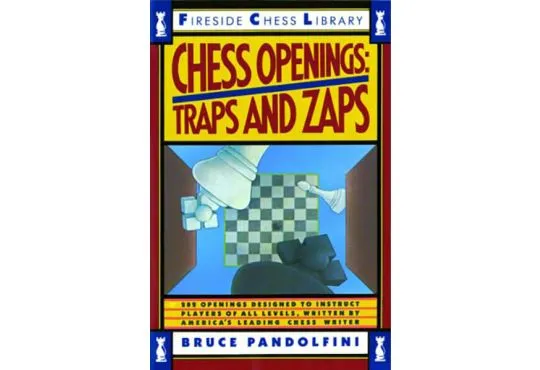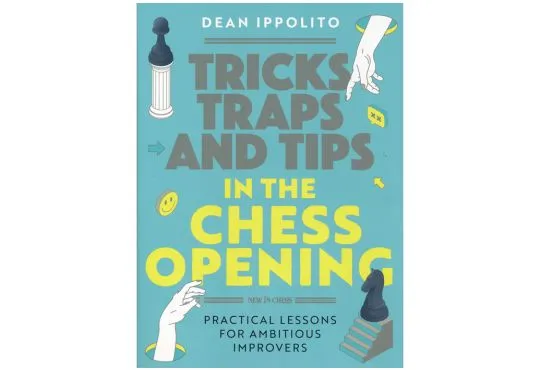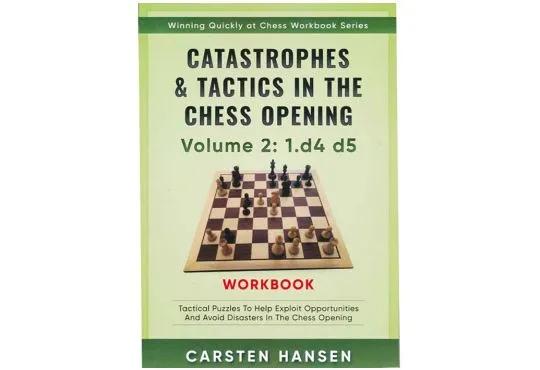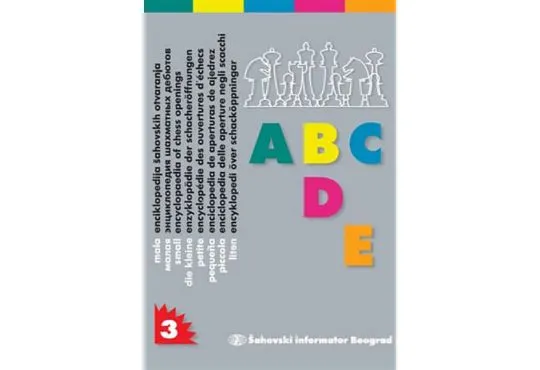The 4 Worst Openings to Play in Chess
Have you ever played or played against a chess opening so dire that the game was virtually over before it began? If you blunder and use one of the worst openings to play in chess, the match is virtually over after a couple of moves. This is especially true if your opponent knows how to capitalize on it.
In this article, we’ll be taking a look at four of the most ill-advised openings that have ever been played on 64 squares. You’ll also learn about avoiding traps. How to swiftly exploit your opponent should they ever try any of the following opening moves.
Table of contents
1.f3 Barnes Opening
The renowned Latvian chess author and Grandmaster Edmar Mednis once remarked that 1.f3 is the very worst first move White can make. The opening doesn’t open up any lines and does little to claim control of the center of the board. Furthermore, it also blocks the knight from developing on f3 and weakens the kingside pawn structure.

The opening is unfairly named after the highly competent English player Thomas Wilson Barnes (1825–1874), who certainly didn’t advocate 1.f3. Instead, Barnes was known for the Barnes Defense, where Black answers 1.e4 with 1...f6. Most consider the Barnes Defense dubious, but it appears pretty reasonable compared to the madness of 1.f3.
What would one be trying to achieve with 1.f3, anyway? The move does exert influence over the coveted e4 square, but that could also be done with 1.d3 or 1.Nc3, neither of which suffer the same pitfalls.
-
 Catastrophes & Tactics in the Chess Opening - Volume 3: Flank Openings Winning Quickly with Chess Series$13.95
Catastrophes & Tactics in the Chess Opening - Volume 3: Flank Openings Winning Quickly with Chess Series$13.95
To make matters worse, Barnes Opening doesn’t offer any cheeky traps that many other off-kilter openings boast. Instead, White can become the victim of the fastest checkmate in the game if it follows with g4. 1.f3 e5 2. g4 Qh4 ++. Yes, that’s fool’s mate!

Verdict
- The Barnes Opening is bereft of any merit and offers Black a quick advantage.
- 1.f3 might be the worst opening to play in chess.
1.Nh3 The Amar Opening
1. Nh3 is most commonly known as the Amar Opening, but its alternative name, the ‘Drunken Knight Opening,’ is more descriptive of how reckless this first move really is. Chess author Tim Harding even scoffed that “Amar” must be an acronym for “Absolutely mad and ridiculous”!
Jokes aside, the Amar is named after the Parisian amateur chess player Charles Amar, who used the opening in the 1930s. What advantage he or anyone else would seek from it remains a mystery! Let’s take a closer look at why the Amar is a lost cause.

While developing a knight on the first move isn’t unusual, placing it on either A or H files is heedless. Not only does the knight fail to win any influence in the center, but it also becomes easy prey for Black’s bishop. In answer to 1.Nh3, Black normally plays 1…d4, opening up its bishop to attack the knight.
White’s only sensible response is g3, defending the knight with its bishop. Black can then go on to dominate the center, while White’s clumsy position is beyond easy recovery. The only conceivable advantage of a knight on h4 would be to exert influence on f4, but no opening lines make that worthwhile.
-
 Chess Opening - Traps and Zaps - VOLUME 1 202 Openings Designed to Instruct Players of All Levels, Written by America's Leading Chess Writer$18.95
Chess Opening - Traps and Zaps - VOLUME 1 202 Openings Designed to Instruct Players of All Levels, Written by America's Leading Chess Writer$18.95
What’s worse is there aren’t even any cheeky traps for White to redeem itself in the Amar, making this not only an awful opening but also rather dull!
Verdict
- 1.Nh3 is an abysmal opening move without any redeeming features!
- Instead, consider studying 1.Nf3 openings.
1.a4 The Ware Opening
It’s amazing how often complete beginners start by playing a rook’s pawn. It’s as if they can’t wait to get those mighty rooks out into the game as soon as they can. Definitely not a textbook strategy!
1.a4 was named after Preston Ware (1821 - 1890), a U.S. player who liked to surprise opponents with eccentric openings. The trouble with 1.a4 is that Black can immediately counter with e5, taking control of a3 with its bishop and preventing the rook from developing.

But advancing a rook this early in the game is so unsound that one might simply let White have its way. The rook can then be chased around, causing White to lose tempo while Black develops and takes control.
The Ware opening is classified as A00 ‘irregular’ in the Encyclopedia of Chess Openings and is usually only played by newcomers to the game. The only exception might be playing 1.a4 as a joke for those who enjoy attempting miraculous comebacks.
Did you know? In the 2012 World Blitz Chess Championship, Norwegian Grandmaster Magnus Carlsen played the Ware against Azerbaijan Grandmaster Teimour Rajabov and won the match! Bear in mind, it was played as a gag in response to his opponent’s remark two years earlier: "Everyone is getting tired. You might as well start with 1.a4, and you can still beat them."
Verdict
- An excellent way for White to throw away its initiative on the first move.
- 1.a4 serves no purpose except to advance a rook in the opening (which is entirely inadvisable!)
-
 CLEARANCE - Tricks, Traps, and Tips in the Chess Opening Practical Lessons for Ambitious ImproversSpecial Price $10.00 Regular Price $24.95
CLEARANCE - Tricks, Traps, and Tips in the Chess Opening Practical Lessons for Ambitious ImproversSpecial Price $10.00 Regular Price $24.95 -
 Catastrophes & Tactics in the Chess Opening Workbook Series - 1. d4 d5 - Vol. 2 Winning Quickly at Chess Workbook Series$21.95
Catastrophes & Tactics in the Chess Opening Workbook Series - 1. d4 d5 - Vol. 2 Winning Quickly at Chess Workbook Series$21.95
1.g4 Grob’s Attack
It’s widely agreed that 1.g4 is one of the most ludicrous first moves in the game, but it’s not entirely without its saving graces! The opening is the only one on our list legitimately named after an International Master. Henri Grob (1904–1974) developed some interesting traps to follow the baffling entry, so let’s take a look at this one in more detail.

On the face of things, 1.g4 appears outrageous. It throws out one of White’s precious kingside pawns into a vulnerable position, forfeits the option to castle safely on the kingside, and does nothing to take command of the center.
Yet Grob’s Opening still retains a cult following. So where’s the catch?
1...d4 and Grob’s Gambit
Frequently, Black will answer 1.g4 with 1...d4, attacking the outlying pawn with its bishop. Instead of going to its rescue, White initiates Grob’s gambit with 2. Bg2.
White begins piling pressure on the vulnerable b7 pawn if Black takes the bait. Playing c4, White challenges the queen’s pawn that obstructs its bishop’s dangerous diagonal to b7 and Black’s rook.

The trouble is that it’s not hard for black to prevent the ploy. Playing c6 bolsters the diagonal and allows its queen to defend b7 when White follows with the inevitable Qb3.
Nevertheless, all of this requires some thinking time for Black to figure out. Because it’s so off-the-wall, Black is unlikely to know the moves by heart and may need time to avoid stumbling into the traps. So, while it remains an unviable opening against competent players in standard play, the traps could still trip up beginners or even seasoned players in bullet or blitz games.
Verdict
- A reckless opening that sacrifices the kingside in an attempt to lay some sneaky traps.
- Best reserved as a comical way to startle your opponent in blitz or bullet games when little is at stake!
Related: Powerful chess gambits for beginners to try (including some cunning traps!)
Now, Why Not Learn the Best?
Now that you know four of the worst-named openings you could ever try, why not learn the strongest?
The very best way to get a good handle on several great openings is to study some tried-and-tested chess opening books. They will offer you some robust lines of fire for both White and Black and teach you how best to counter the most common openings that your opponent may try.





